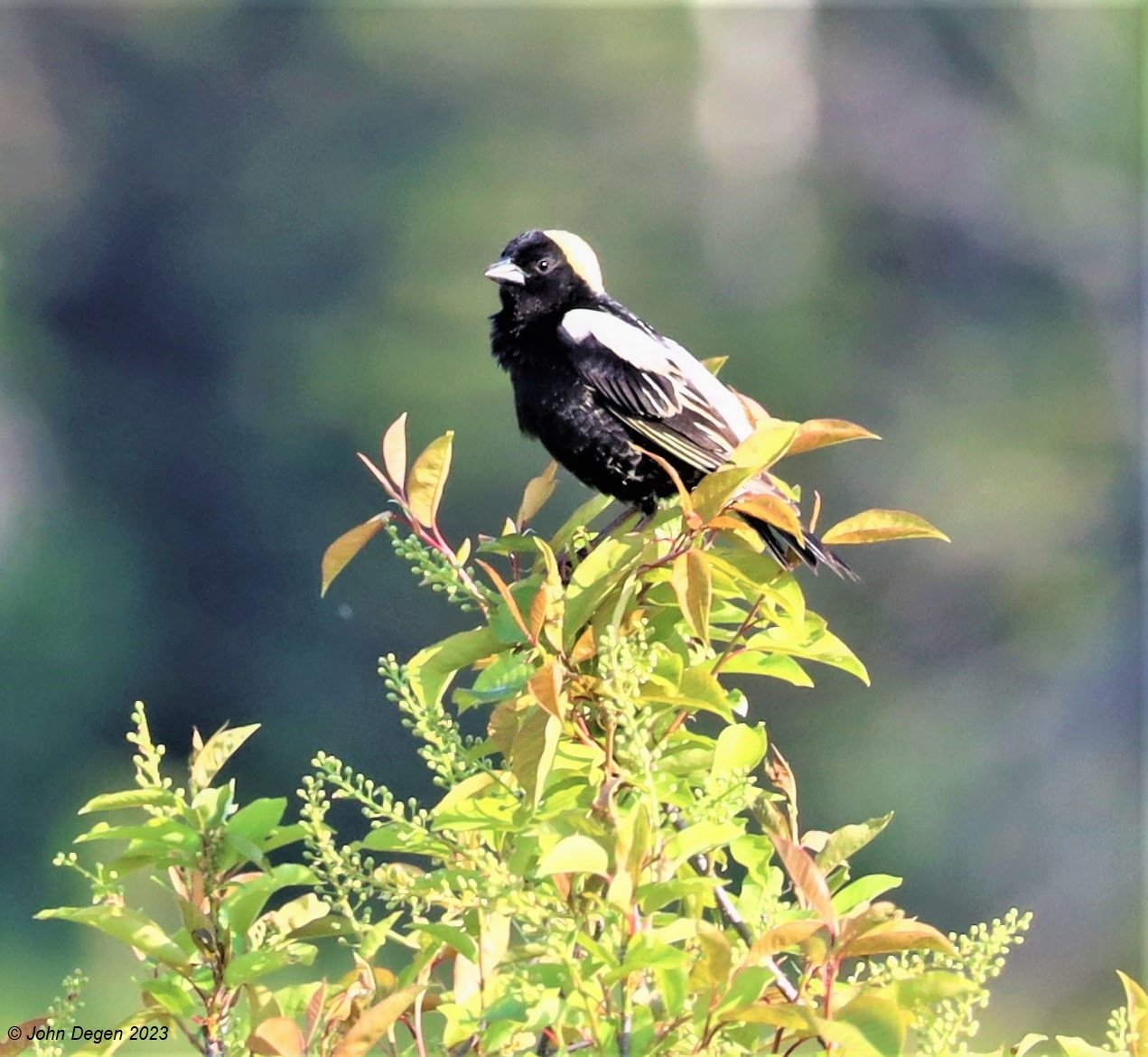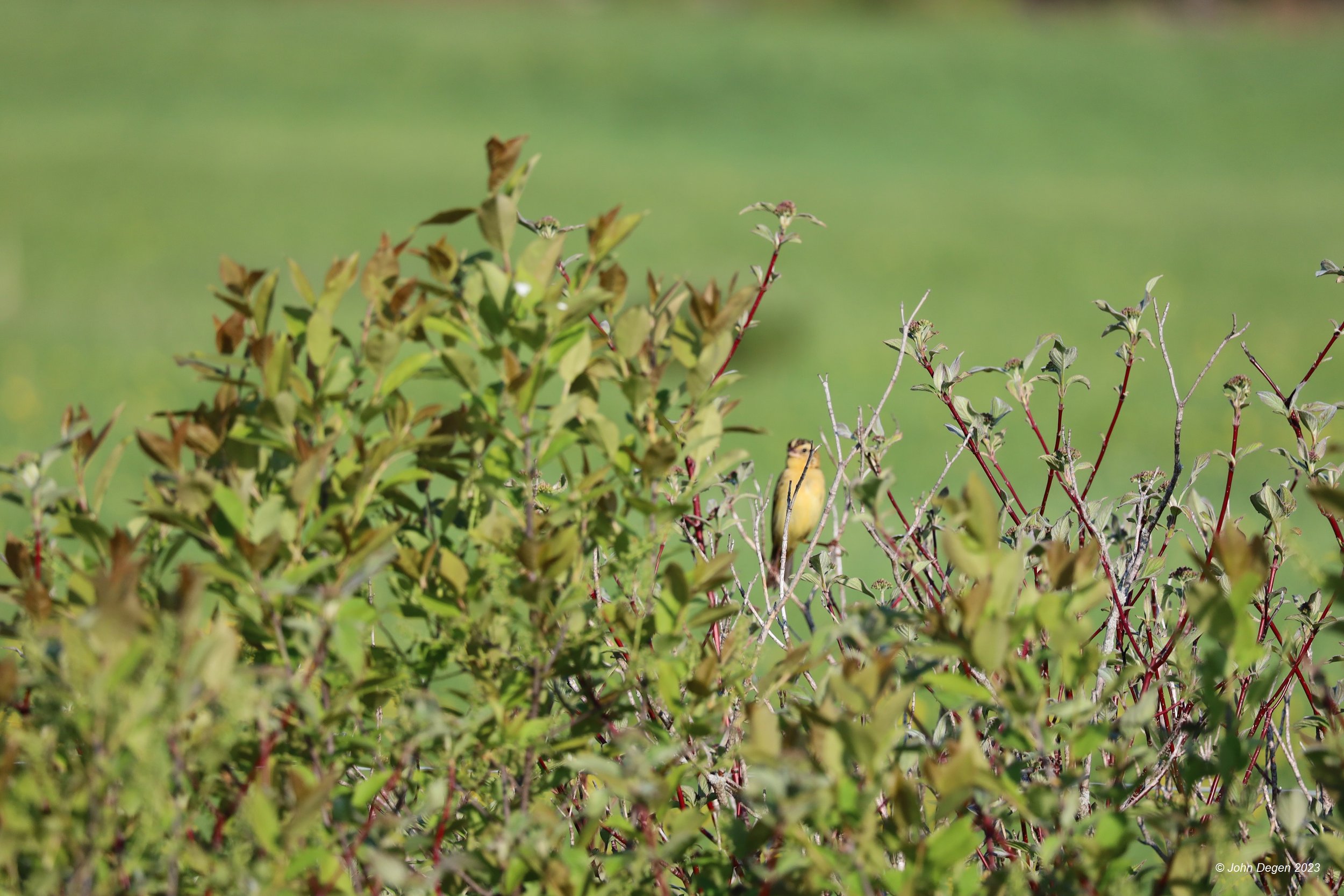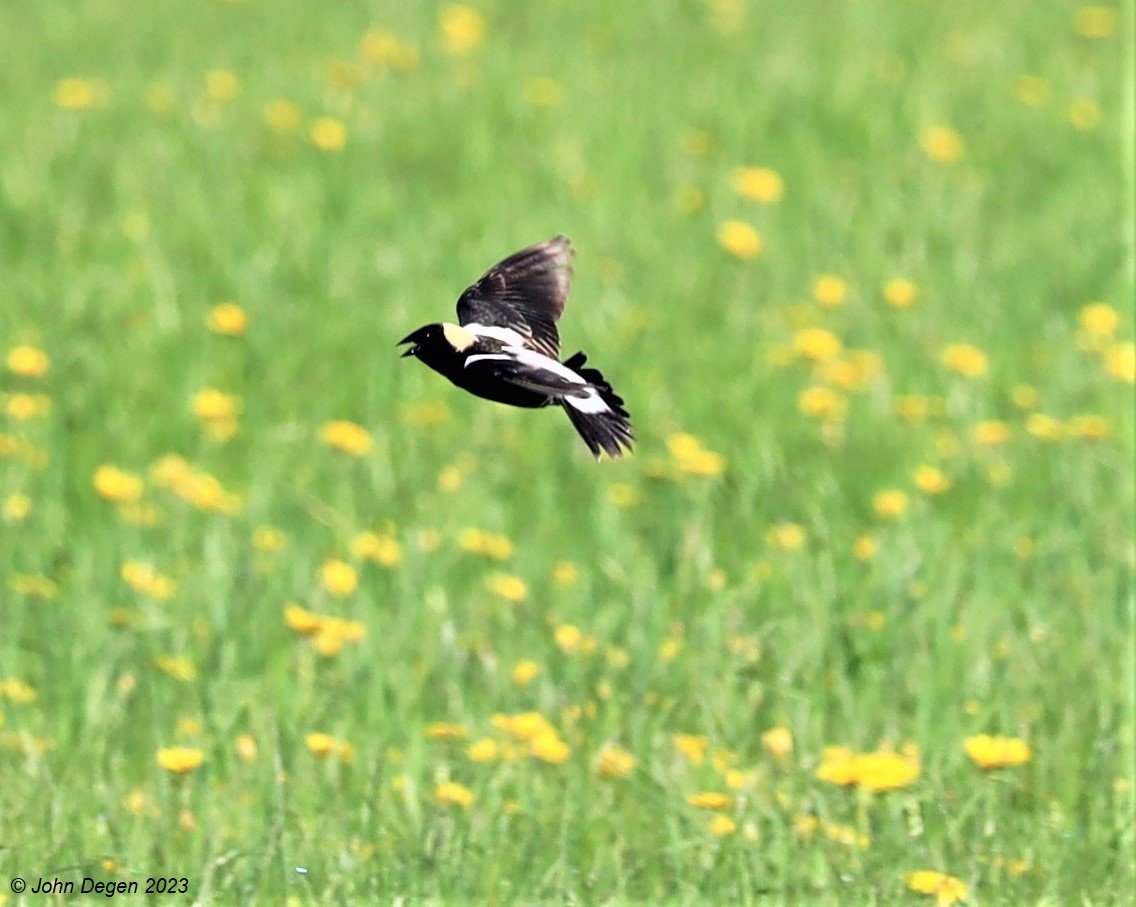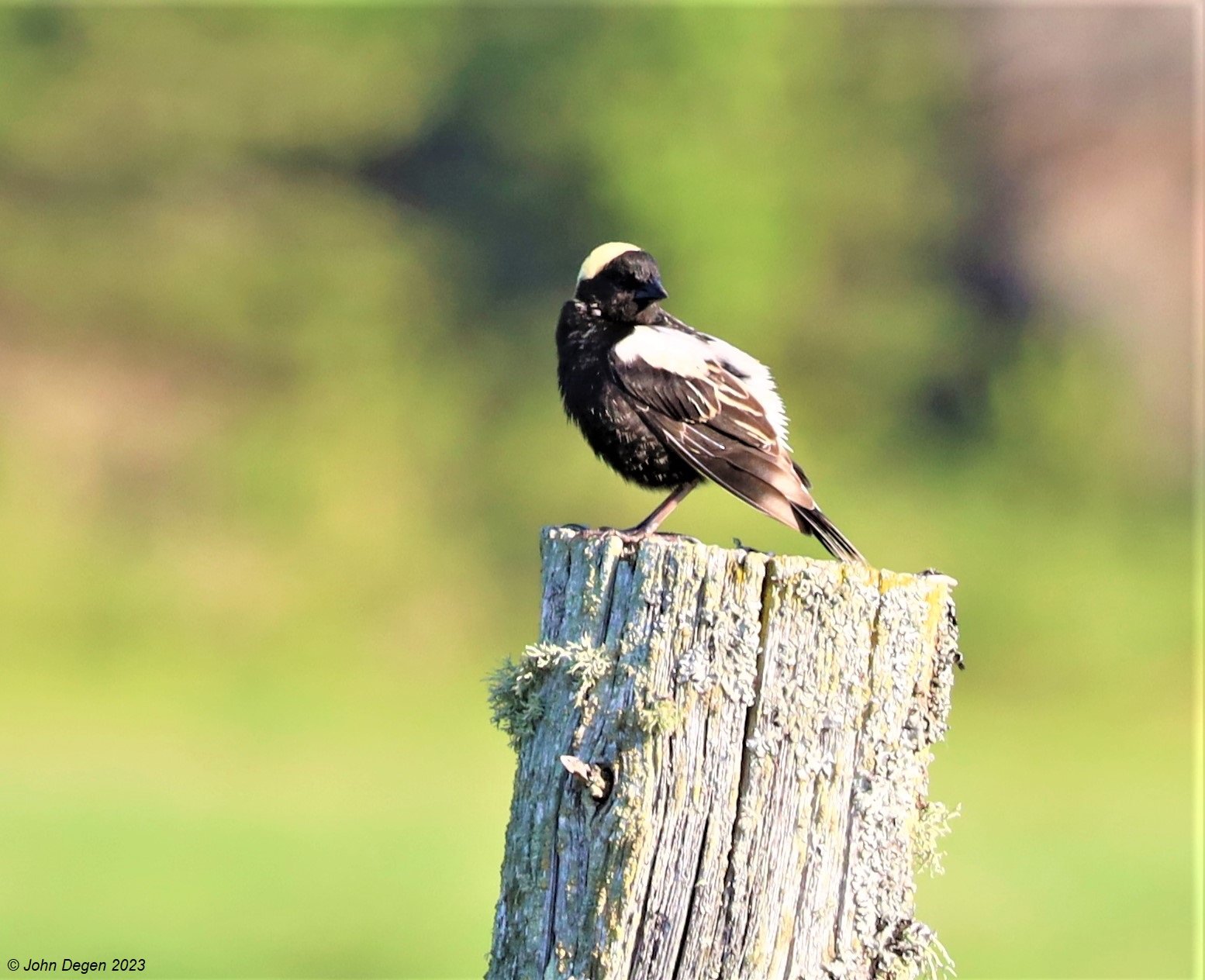This week, I was fortunate to come across a breeding pair of Bobolinks (Dolichonyx oryzivorus) in the fields just north of Thessalon here in Northern Ontario.
Judging by the range of birdsong along that rural roadway, there were a number of bobolinks and other tall grass species about, but I had a wonderful time just watching from a distance the nesting and foraging antics of this pair. They chased each other around quite a bit, but it was only the male in full spring plumage that really posed for the camera. The female kept herself mostly hidden in dense leafy brush and deep in the taller grasses.
The best I could do in capturing the elusive female bobolink.
A blackbird with an impressive range of song and sound, the bobolink is listed as either threatened, declining, or endangered depending on the online resource you access. I see by the Bird of the World range map that I’m lucky to be just on the northern edge of its breeding range for my province, and that in non-breeding months it can be found as far south as central Argentina. The internet tells me this bird even visits the Galápagos Islands on its way south, and was collected there by Charles Darwin in 1835. That is a mad long migration, one that is helped by a natural compass built into the tissues of the bobolink’s nasal cavity (how cool is that?).
Thanks, as always, to Cornell University’s All About Birds for this image.
The chief factor in the decline of this spirited little ground-nester is loss of habitat. A creature of grasslands, at least during mating and nesting seasons, the conversion of tallgrass prairie to cultivated farmland in North America has forced the Bobolink to lay eggs mostly in farmed hay fields. My late teenage years in Southern Ontario had some farmwork in them, including riding a wagon to haul hay bales off the land.
Tallgrass prairie was the traditional breeding ground for this endangered adventurer.
Depending on the weather, that first complete cut of hay can be as early as late May, which is terrible timing for bird life using the cover of that crop for nesting and raising young. I wasn’t paying a whole lot of attention back then, but I do remember all manner of wildlife scattering before the hay mower back in the mid-1980s
The price of hay has recently risen to 1.3X that of corn and, generally speaking, hay is good for the land, enhancing soil health. But the desire to maximize values by pulling off many crops in one season, combined with climate change, means the Bobolink’s undisturbed time in the fields gets dramatically squeezed.
The provincial government in Ontario hasn’t done grassland species any favours with its expansion of development on environmentally protected areas outside the south’s major urban sprawl. The Greenbelt Foundation estimates less than 1% of the existing Ontario greenbelt is grasslands. That’s only about 441 hectares. A tiny, shrinking parcel of safe nesting ground. There is a focused strategy for recovery of both Bobolinks and Eastern Meadowlarks in place in Ontario, but it’s pretty clear the current Ontario government has little time for it.
Donate to the Nature Conservancy or your favourite bird charity.
The Nature Conservancy of Canada is on the case, actively conserving and protecting grassland parcels where it can acquire them. But bobolinks need help from us all. Cornell University notes an overall 56% cumulative decline in the Bobolink population since 1966, and estimates a current global breeding population of just 10 million. Their present rate of decline (over 1% per year) could halve their population in 45 years. Be aware of the need for grassland preservation, and both advocate and donate where you can.
“History repeats itself, but the special call of an art which has passed away is never reproduced. It is as utterly gone out of the world as the song of a destroyed wild bird.”
bird book noted
Field Notes from an Unintentional Birder, by Julia Zarankin
Immersed as I am in the world of books and writing, it was inevitable that I would begin to dig into the literature of birding. I did so reluctantly, because I am a stubborn non-joiner, anti-competitor, and lone figurer-outer, and I had the feeling most books on birding were going to try and talk me out of those personality traits. So far, I’ve read three birding books, am working on a fourth, and fully half this list has made me feel just fine about not wanting to become an expert or informed obsessive.
Imagine my surprise when the first title I chose, Julia Zarankin’s charming memoir Field Notes from an Unintentional Birder, not only gave me permission to be pretty bad at birding, but presented me with an extremely familiar setting in which to be not great. Zarankin became “one of those people” who carry binoculars or even fancier spotting optics in the exact same place I did… at Etobicoke’s Colonel Samuel Smith Park at the bottom of Kipling Avenue right on Lake Ontario’s north shoreline. And while she has collected a LOT of knowledge and an impressive Life List, Zarankin is clearly incapable of lecturing and/or bragging.
In the telling of her personal story, Zarankin uses her growing knowledge of, and happiness around, birds as a successful companion to the potential non-successes of life’s many stages. We hear of relationships both failed and fruitful. We come to understand the intimate relationship between the young person displaced by geo-politics and the migrant species who cannot stay put and survive. We ruminate with Zarankin on potential parenthood, and what that means (or doesn’t) to the project of being a living creature in this world.
Zarankin takes us travelling with her (Iceland, Israel, a seabird colony off the coast of Maine, etc.), but it is the grounding of her experiences in and around Toronto that speak most powerfully to me. Her volunteer work at the Tommy Thompson Park Bird Research Station, the loss of her friend and fellow birder in a tragic road accident north of the city, her partner’s wry and sarcastic acceptance of sometimes out-of-control avian focus. These things speak to me of home, community, and what it means to really see the place you’ve decided to inhabit.





